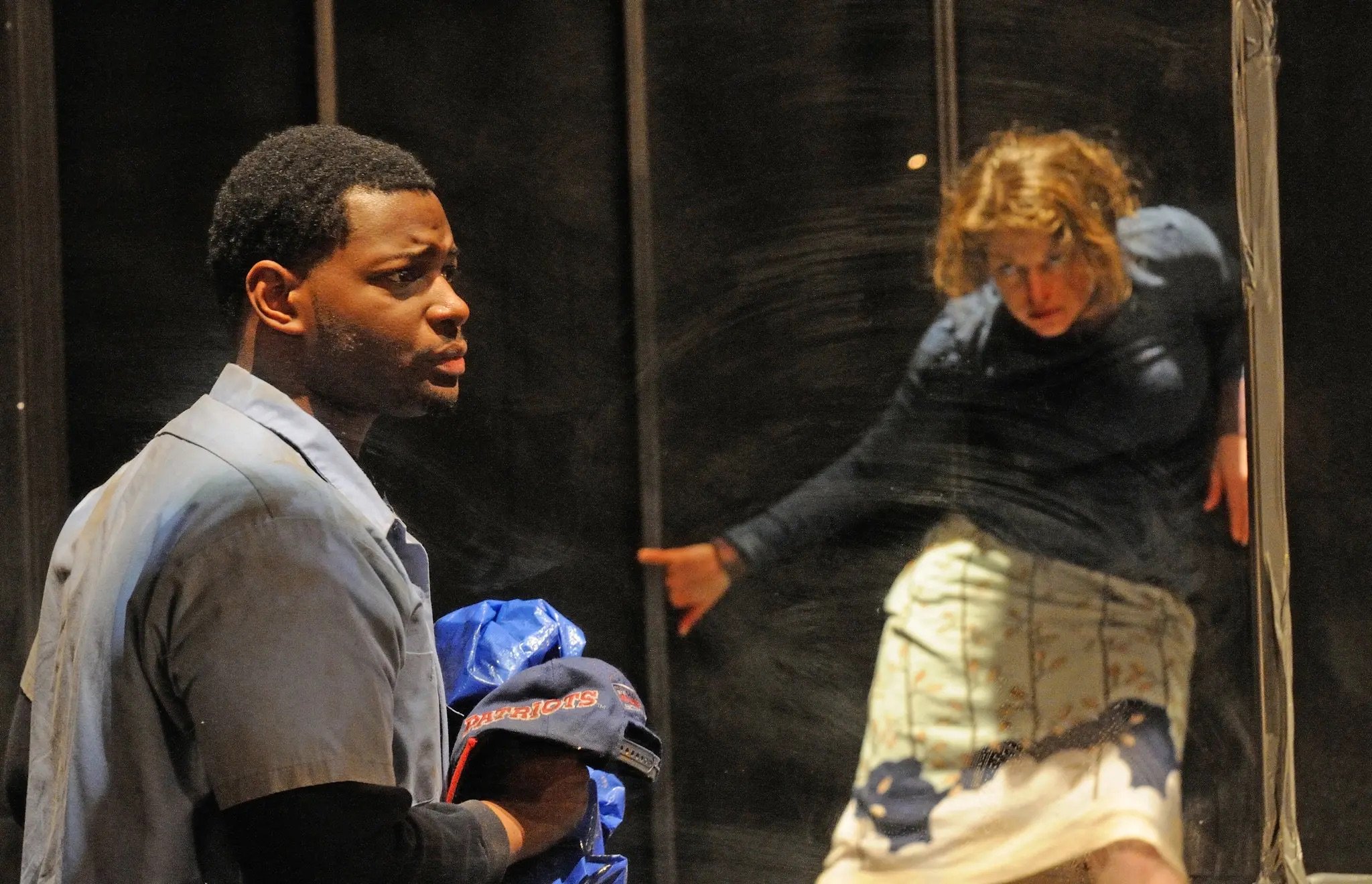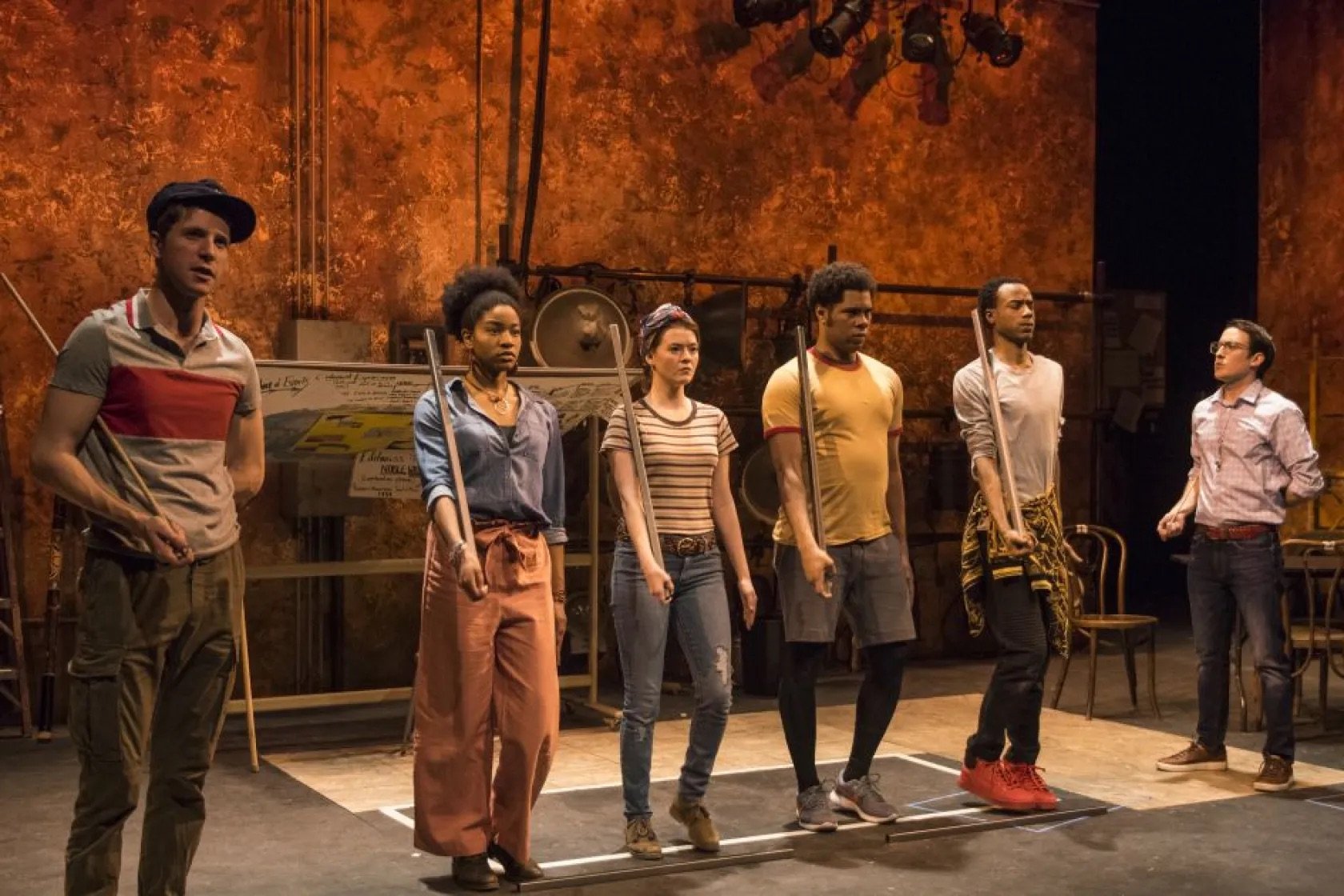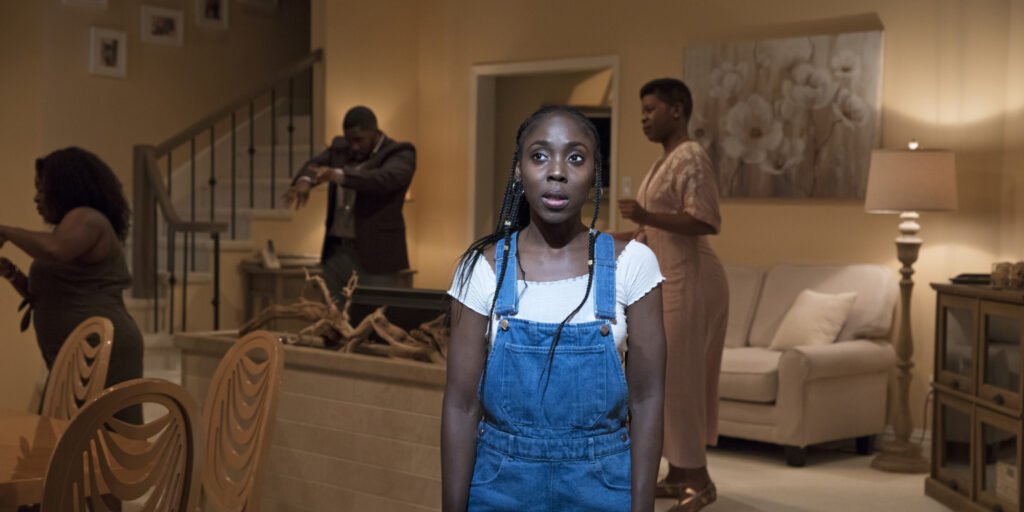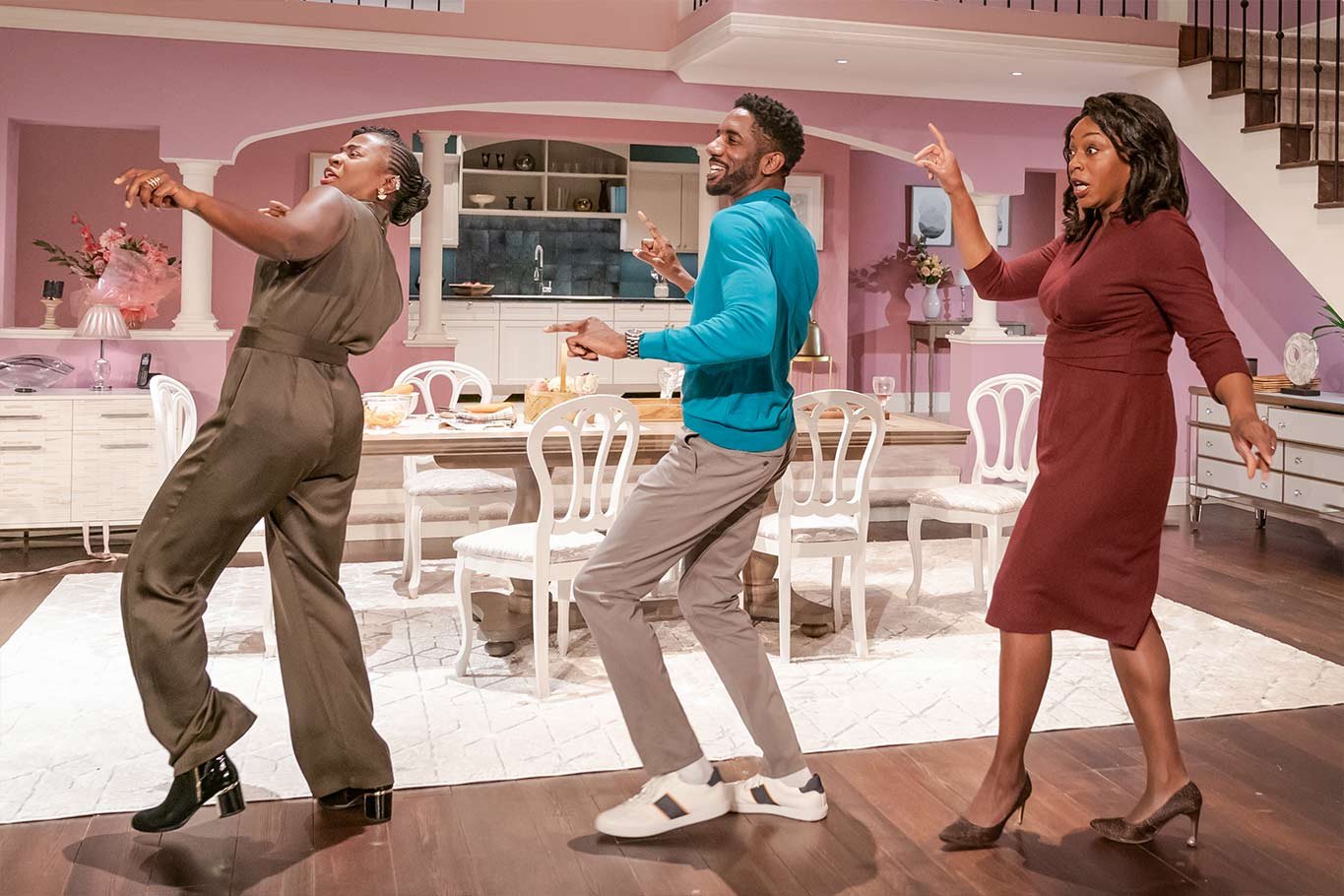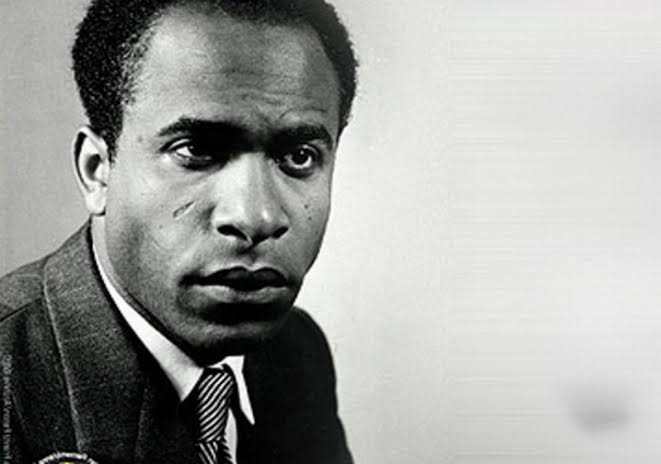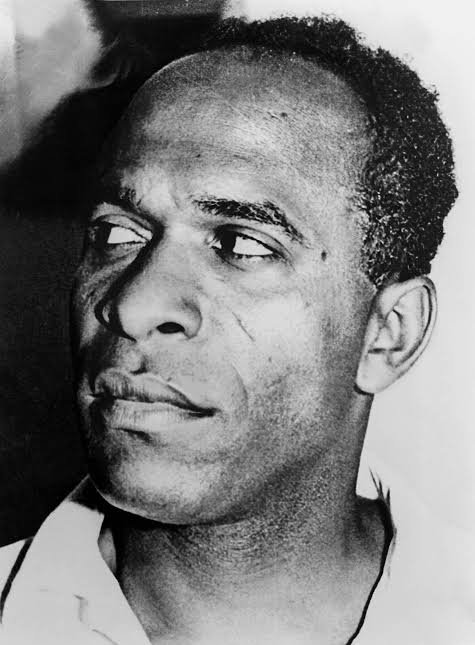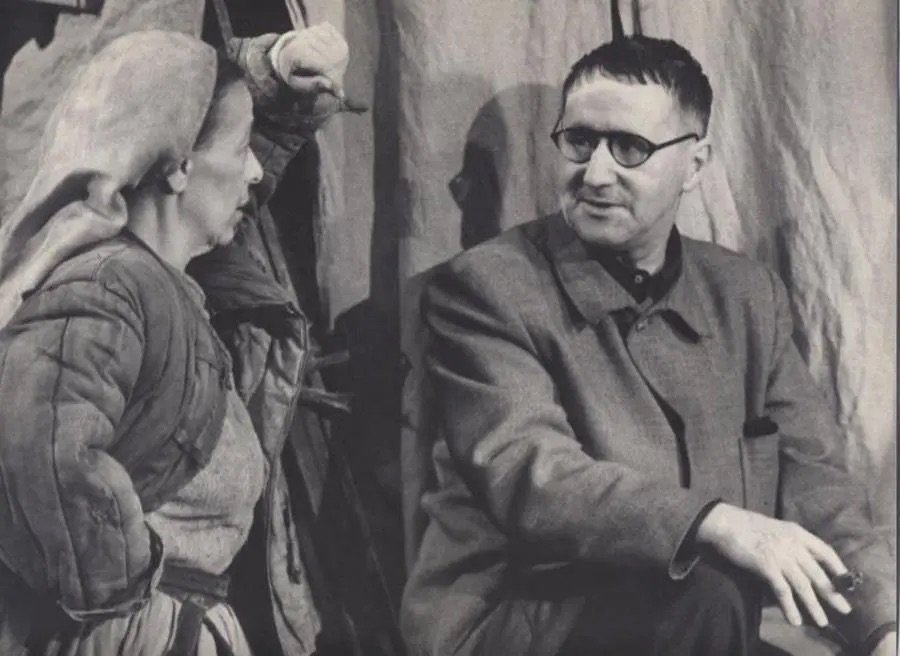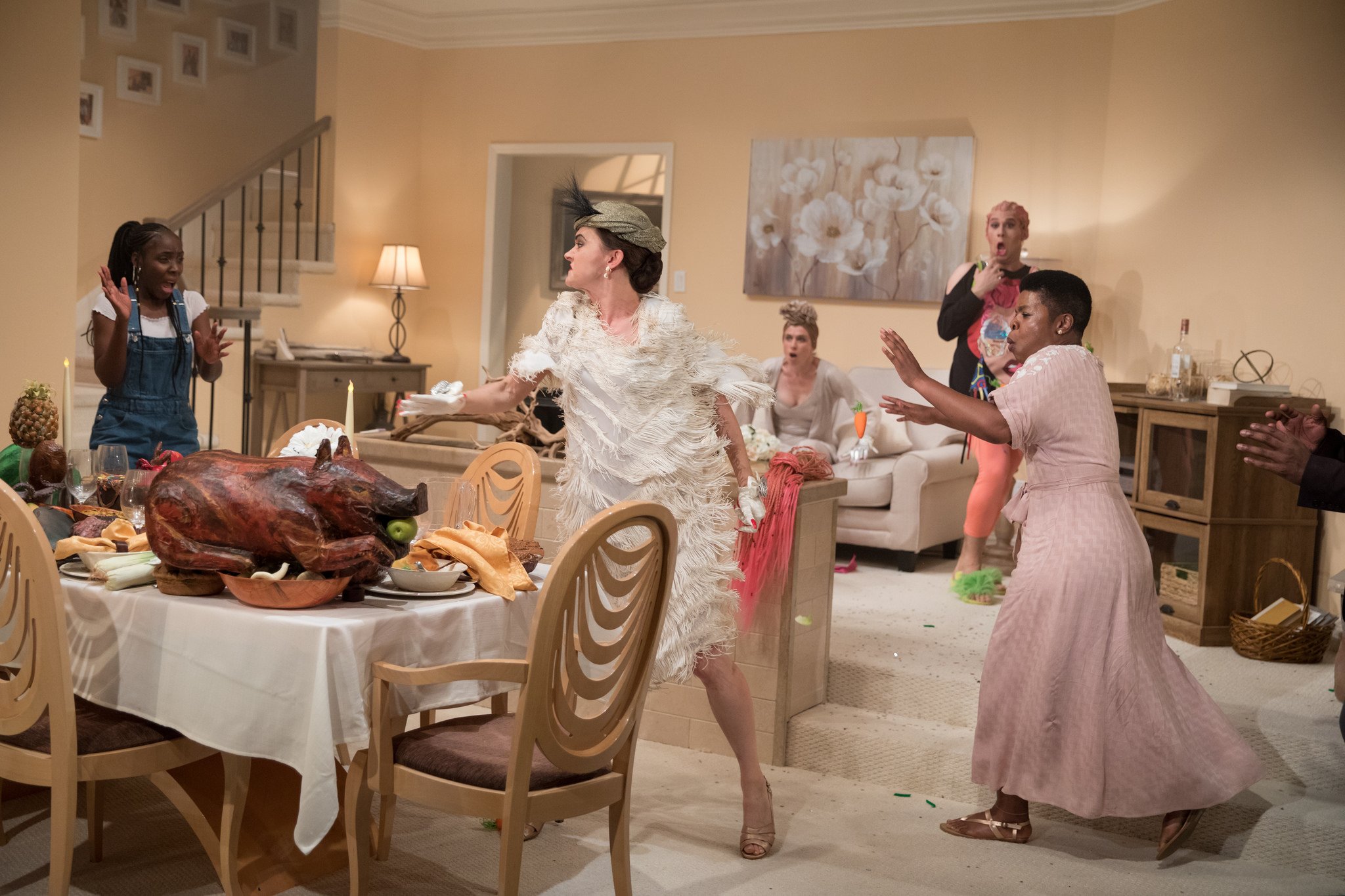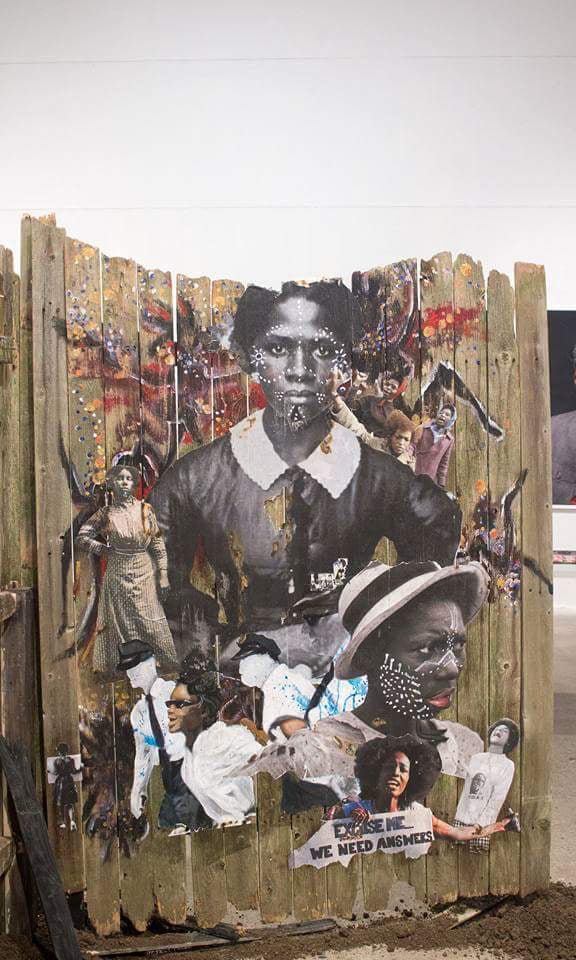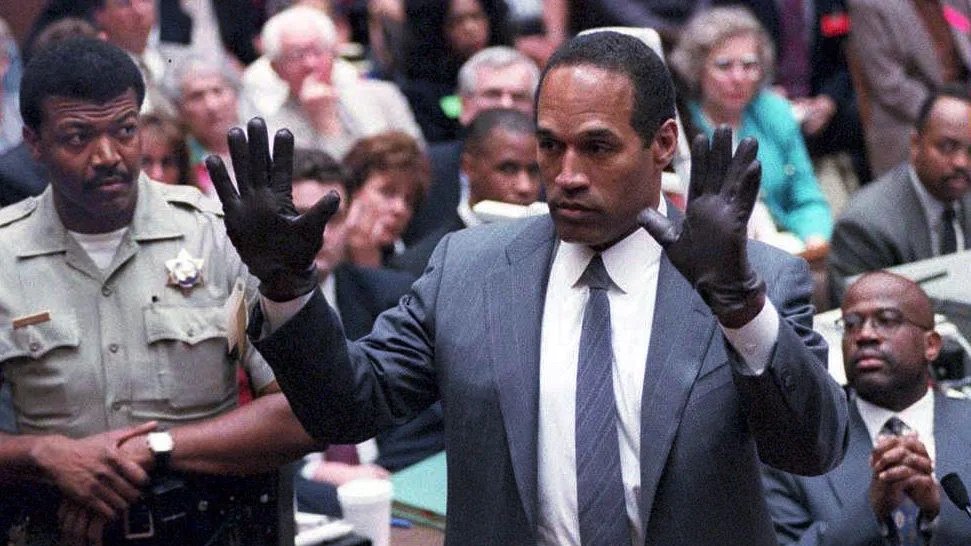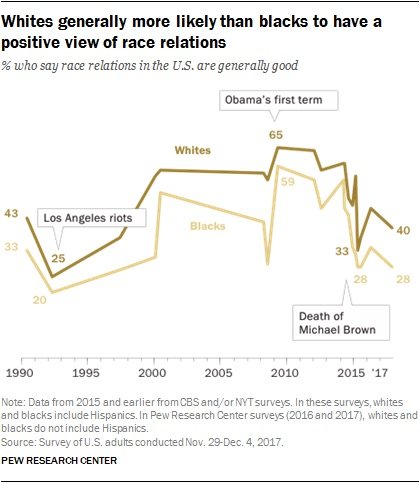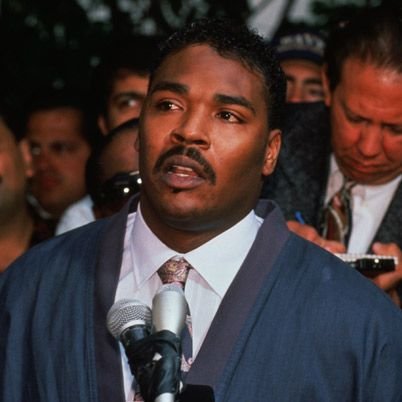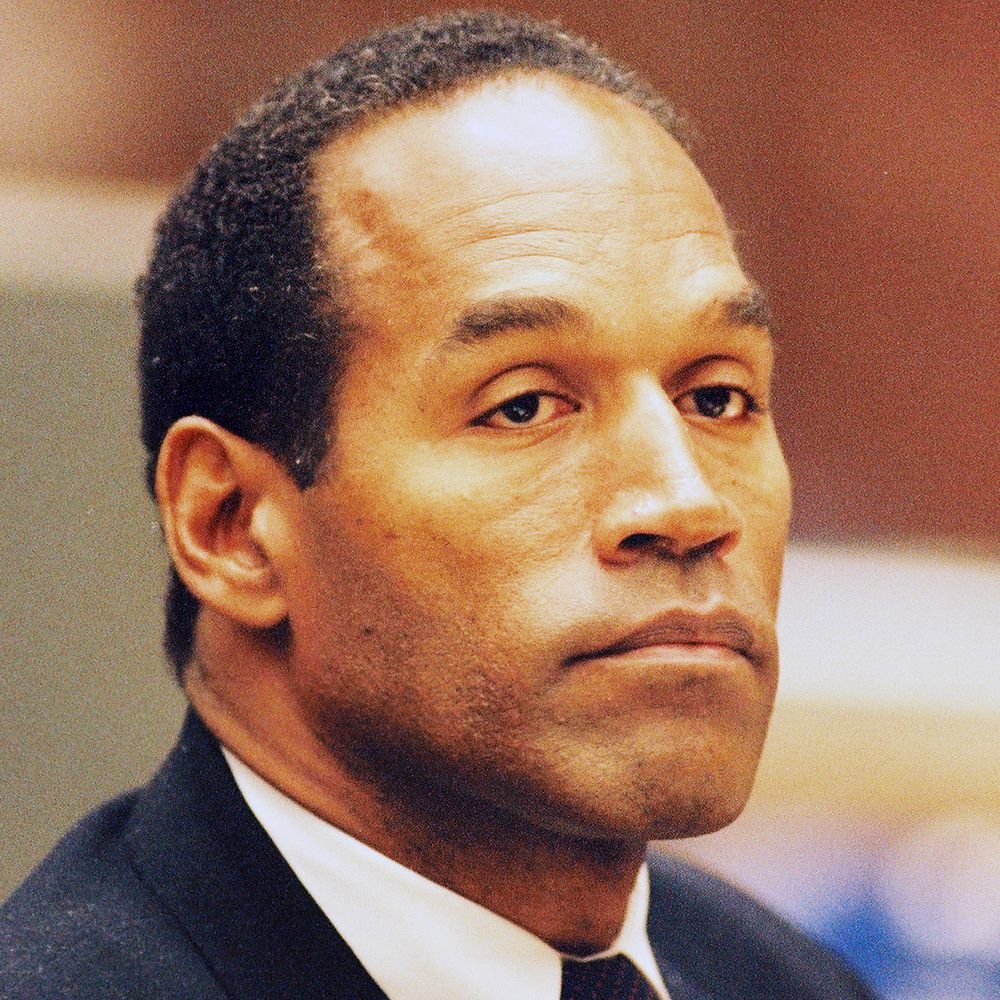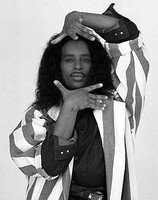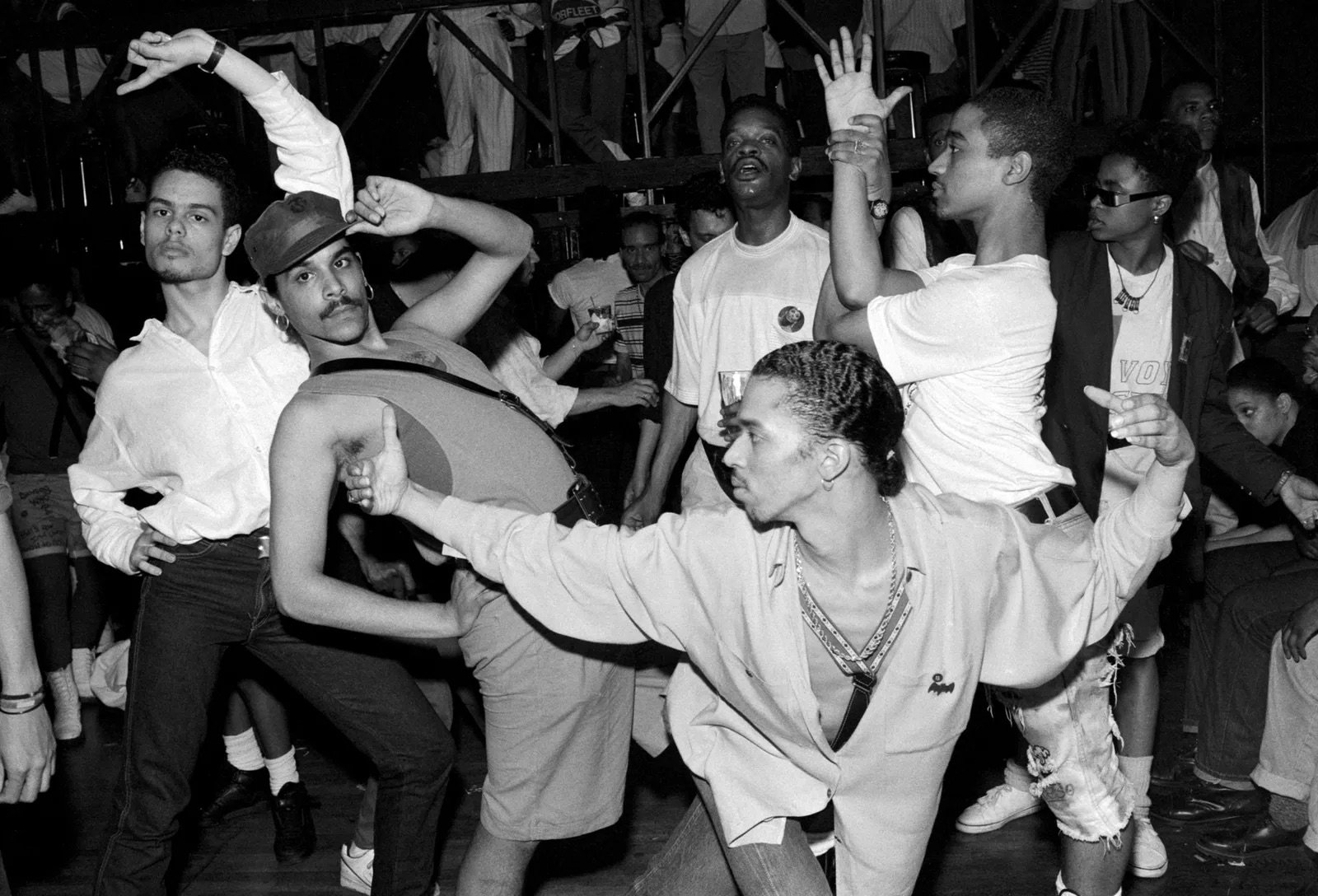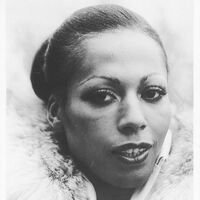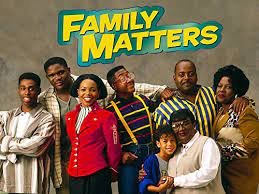Kate Wexler
Student Production Dramaturg
DeRon S. Williams, Ph.D., Dramaturgy Supervisor
JACKIE SIBBLIES DRURY
Production photo from Trinity Repertory Company from 2013 of “Social Creatures”.
“We are Proud to Present…” at Chicago’s Steppenwolf Theater in 2019.
About The Playwright
Harnessing the styles of Brechtian theater, Jackie Sibblies Drury dives head-on into approaching difficult topics while making the audience feel more involved than ever. Born and raised in New Jersey, Drury is now a Brooklyn-based award-winning playwright who has spent her professional career in playwriting. Drury got her bachelor’s degree in English Literature from Yale University in 2003. In her undergraduate career, Drury wanted to be an actor before falling in love with playwriting. After completing her degree at Yale, she finally had more time to dive into her creative writing. Drury then completed her MFA in playwriting from Brown University in 2010. Since then, Drury has made a mark by bringing back Brechtian theater techniques into the spotlight (learn more about Brechian theater in the “Epic Theater and Alienation” section of this website). Her plays include We Are Proud to Present a Presentation about the Herero of Namibia, Formerly Known as Southwest Africa, From the German Sudwestafrika, Between the Years 1884-1915 (2012), Social Creatures (2013), Really (2016), Fairview (2018), and most recently, Marys Seacole (2019). For her work, Drury has been awarded the Windham-Campbell Literary Prize in Drama (2015), Steinberg Playwrighting Award (2019), Pulitzer Prize in Drama (2019), the PEN/Laura Pels International Foundation for Theatre Award (2022), and more. Known for her unique writing style, Jackie Sibblies Drury continues to leave a mark on US stages and beyond.
Closer Look: We Are Proud to Present…
Warning: Violent Imagery Mentioned
Before writing the Pulitzer Prize-winning Fairview, Drury wrote We Are Proud To Present a Presentation about the Herero of Nambia, Formerly Known as Southwest Africa, From the German Sudwestafrika, Between the Years 1884-1915, which sounds more like a title to a thesis paper than a play. Debuting at the Soho Repertory, this play depicts the first rehearsal composed of 3 Black and 3 white actors trying to create a play around the Herero and Namaqua genocide. Starting with good intentions, the first rehearsal turns and becomes more than anyone bargained for. The actors have a hard time piecing together what happened since all they have are love letters sent by a German soldier to his lover. Due to the lack of sources and understanding of the topic, the actors draw from the history of the U.S. South, Jim Crow laws, and slavery. We Are Proud to Present… morphs from good intentions of presenting this little-known genocide into what Drury describes as a “spiritual lynching” (Drury). Drury wanted the actors and the audience to be pushed into uncomfortable places in order to help the viewers gain new perspectives/look into themselves.
“Why are Americans so bad at knowing anything about anyone that’s not American—or even American history? And it’s also about peoples’ inability to talk about race in any way that’s not cloying or offensive. It just mushrooms out from this accident” - Jackie Sibblies Drury
PRODUCTION HISTORY
How Fairview Came To Be
Co-commissioned by Berkeley Repertory Theatre and Soho Repertory, Fairview first stepped on stage at the Soho Rep in New York City. The story of how Fairview first started goes further back to 2013. In 2013, Jackie Sibblies Drury and Sarah Benson met at Berkeley Repertory’s Summer Floor Residency Lab. Even though Drury and Benson worked on separate projects during the summer lab, they formed a connection. Starting in 2007, Benson served as the Artistic Director until the 2022 season, when she stepped down from the position. Originally from the UK, Benson always looked for new and unique works to be produced on Soho’s stage. After the 2013 Berkeley Summer Lab, Drury and Benson decided to start a new project together. In 2015, Drury and Benson went back to the Summer Flore Residency Lab to work together on what is now Fairview, which would translate between Soho’s tiny black box stage to Berkeley’s big space. From 2015 to 2018, Drury and Benson brought in six actors (who performed in the first production of Fairview), Soho Rep’s scenic designer, Mimi Lien, and talented choreographer Raja Feather Kelly, among other artists to help build on the world of Fairview.
“Yet Jackie Sibblies Drury’s shapeshifting Fairview wants us to think more carefully about those old conventions, about the way power and race move through a simple thing like consuming a piece of art”
- Taken from Helen Shaw’s review of Fairview from 2018
MaYaa Boateng as Keisha at the Polonsky Shakespeare Center in Brooklyn.
Production photo from London’s Young Vic
INTERVIEWS WITH DRURY
Learn more about Fairview and more about the different productions here
-
Drury sits down with interviewer Alicia Menendez to talk in-depth about all things Fairview. Watch here (Time: 16:20)
-
Listen to Drury and Sarah Benson at the Berkeley Repertory go behind the scenes on Fairview. Watch here (Time: 1:50)
-
Drury talks briefly about the process of putting up Fairview in London’s Young Vic Theatre in 2019. Watch here (Time: 1:45)
-
Jackie Drury meets with Nadia Latif, the director of the first production of Fairview, to talk about the play and the production at the Young Vic Theatre in 2019. Watch here (Time: 6:37)
The top photo shows Beverly at Soho Repertory putting on her lipstick using the mirror on the fourth wall. The bottom photo depicts Mack’s entrance as Erika at the Berkeley Repertory.
Fairview Hitting The Stage
The initial run of Fairview was from June 17th to June 22nd of 2018; however, due to its success, the run went on for three more weeks going until August 12th. After concluding the production at the Soho Rep, Fairview traveled to the West Coast to the Berkeley Rep to be produced in October through November of 2018. While many critics praised Fairview for its unique perspective on racial issues and the white gaze (head to the “What is the White Gaze?” section of this website to learn more), there were mixed reactions from the audience. Some audience members felt very moved by the performance, some felt uncomfortable, and some audience members left the show entirely, presumably unwilling or unable to cope with the content. Since Fairview calls out whiteness and implores the audience to look within themselves, many audience members, particularly the white audience members, were left shocked. No matter what the individual reactions from the audience members were, Fairview sparked many conversations about whiteness and race across the nation and gathered critical acclaim.
After the first production at Soho and Berkeley, Drury won the Pulitzer Prize in Drama in April 2019 for Fairview. In turn, this made Fairview attract even more popularity and praise. After being produced at Soho and Berkeley Rep, Fairview was put up once again with the original cast and crew. Opening on June 2nd, 2019 at Brooklyn's Polonsky Shakespeare Center, Fairview proved to be a smashing success. Due to the high demand, Fairview’s run was extended three more times before it finally ended on August 11th, 2019.
The final production of Fairview that involved Drury herself was at London’s Young Vic Theatre with director Nadia Latif. The production ran from November 28, 2019, to January 23, 2020. Latif, who is based in London, describes herself as a theatremaker and film director. Latif also worked with Drury again as director for Drury’s Mary Seacole (2019), which was at London’s Donmar Warehouse in 2022.
Closer Look: The Epigraph
“A Quote:
“‘Dirty Nigger!’ Or simply ‘Look, a Negro!’ from Black Skin, White Masks by Frantz Fanon
This, reversed, is the play, in a way” (pg 4).
On the left is the cover art from the book “Black Skin, White Masks.” Above is a photo of the author, Frantz Fanon.
“I am black; I am in total fusion with the world, in sympathetic affinity with the earth, losing my id in the heart of the cosmos -- and the white man, however intelligent he may be, is incapable of understanding Louis Armstrong or songs from the Congo. I am black, not because of a curse, but because my skin has been able to capture all the cosmic effluvia. I am truly a drop of sun under the earth.” - Fantz Fanon, Black Skin, White Masks
Martinique, a small island in the Caribbean, is where Fanon was born. Today, Martinique is still governed by the French government.
Published in 1952, the autoethnography Black Skin and White Masks dove deep into the effects of racism and colonialism on the people living in Africa and the African colonies. Frantz Fanon (1925-1961) was an author, philosopher, and psychologist who spoke about how colonialism and racism have affected Black communities. Born in Martinique (see map for location), Fanon grew up under the oppressive colonial French government. When he turned 18, he left Martinique to fight for the French forces in WWII in 1943. After the war ended, he went to France to study medicine. While he was studying medicine, Fanon wrote Black Skin, White Masks.
Black Skin, White Masks focuses on what an oppressive culture - whiteness - does to the people who are deemed as inferior. Focusing on Martinique and Guadeloupe (French colonies in the Caribbean), Fanon psychoanalyzes how Black people dealt with as well as behaved within a colonizer culture that actively oppresses them. He describes the fruitless attempts to become equal with the white French people and notes that they are set in their ways of thinking that Black people are ‘inferior’ and ‘small-brained’. This ideology is fueled by the belief in “Scientific Racism.” As well, this ideology was backed by Social Darwinism, which gave people ‘justification’ to continue to dehumanize and discriminate against anyone who wasn’t the dominant race - white.
In Chapter 5 of the book, Fanon uses an anecdote of a white child pointing at a Black person yelling “Look, a Negro!”. He describes how the word “Negro” creates a feeling of alienation from one’s own body. The way “Negro” is used in this context allows further discrimination and the dehumanization of Black people. Further into the chapter, Fanon compares this example to that of a Jewish person. As Fanon describes, a Jewish person can “downplay” their Jewishness, but Black people cannot downplay or hide their Blackness.
The first stage directions for Fairview read, “Lights up on a Negro: Beverly is peeling carrots, real carrots…” (pg. 5).
MAKING THE FAMILIAR STRANGE
From Brecht to Epic Theater to Alienation
Above are photos of the playwright and poet Bertolt Brecht (1898-1956).
Production photo of “Threepenny Opera” from Graeae Theatre in 2014.
In 1949, Helene Weigel (Bertolt Brecht’s wife) played the lead role in Brecht’s “Mother Courage and Her Children”.
Epic Theatre and the Alienation Effect
Most commonly connected to Bertolt Brecht, epic theatre regards a kind of play structure that loosely connects individual scenes and has actors talk directly to the audience to dissolve any theatrical illusions. Based on the theories of Karl Marx, G.W.F. Hegel, and Viktor Shklovsky’s theories, epic theatre’s goal is to defamiliarize the audience - or in other words “make the familiar strange”. This kind of theatre pulls away from realism which was gaining popularity in the early 20th century. Realism puts up the invisible “fourth wall” in front of the audience which distinguishes the audience separate from the actors. While realism wants the audience to passively watch the play, epic theatre wants the audience to “see the strings” of the theatrical performance and have the audience be an active participant. Developed in the 1920s, Brecht made a conscious effort to move away from a realistic approach to a more theatrical approach. Non-western theatre in China and Japan greatly interested Brecht as theatre from these regions is not set in realism. In China, the actors do not put on a false front that the audience is not there - the actors make it clear that they know that there is an audience before them. He was fascinated by how Chinese plays jump back and forth from only interacting with fellow actors to interacting with the audience.
Breaking down the fourth wall and isolating the audience is what is now known as the Alienation effect (also referred to as a-effect, distancing effect, Verfremdungseffekt, or V effekt). The Alienation effect makes sure the audience is not passively watching/getting too emotionally involved in the play by giving reminders to the audience that they are in a theatre and watching a play. Some examples of how alienation can be presented in a play are by showing crew members on stage, having characters randomly burst into song at inappropriate times, verbalizing stage directions, speaking directly to the audience, making the character and actor separate, using prompters with the character's lines on them, etc. Since Western audiences were used to plays that are set in realism, epic theatre, and alienation techniques defamiliarize the audience with what they know about theatre. The goal of the alienation effect is to have the audience ask questions about the made-up environment and how can the play connect to real life. Since Brechian plays are political and a social commentary of the current period in which they were written, Bertolt Brecht wants the audience to think about the play's messages.
Using the anti-war play Mother Courage and Her Children (1939) as an example, this Brechian play heavily relies on the Alienation effect. Written as a commentary against fascism and nazism, Brecht wrote this play after hearing about Poland being invaded by Germany. Set during the Thirty Year’s War (17th century), Brecht explores the horrors of war by following a mother (named Anna Fierling but is referred to in the play as Mother Courage) and her three children, Eilif, Kattrin, and Swiss Cheese, trying to make a profit off of the war. Living in a wagon, the family follows behind a Swedish army and tries to sell food and other goods to the soldiers. By the end of the play, the hopes that Mother Courage has of becoming wealthy from the war fail and all three of her children die. This play is a commentary on how some of the European powers are trying to profit from the war instead of trying to stop the warfare.
The alienation effect is used throughout the play. For instance, placards were used at the beginning of each scene to remind the audience of the play’s structure, hence remembering that they are watching a play. Also, this play is filled with songs; however, this play is not a musical. The songs in this play are sung at unexpected and inappropriate times to jolt the audience into remembering that they are watching a play. The songs also serve the purpose of underscoring the themes the audience should consider throughout the play. Another way to alienate the audience is to use minimal set pieces. For instance, in one of the scenes, a single tree would represent a full forest. This pulls away from realism because the audience is asked to imagine there are trees rather than just seeing all of the forest being represented on stage.
Other Examples of Alienation in Fairview
“Kiesha, instead of delivering her aside, might check her hair, outfit, teeth in the pretend mirror hung on the fourth wall, and then, she might be able to look through it, and see the audience. Maybe” (pg 49).
The start of the food fight in the original production of Fairview in 2018 at the Soho Rep.
Bertolt Brecht
Argued to be one of the most influential playwrights of the early 20th century, Bertolt Brecht (1898 - 1956) was a famous German playwright, poet, and dramatist. Born in Augsburg, Germany, Brecht created what is known today as Brechtian theatre also commonly called Epic Theatre (go to the next section to learn more). Before becoming the playwright the world remembers him today, he started out studying medicine in Munich, Germany in 1917. In 1918, Brecht served in an army hospital during the Great War (commonly known today as World War I). After Germany lost the war, Brecht abandoned his medical studies in 1921 to pursue playwriting. It should be noted that Brecht did write plays during his time studying medicine; however, he did not fully commit himself to writing plays until after the war. His early work includes Baal in 1918 (first produced in 1923), Drummer in the Night (Trommeln in der Nacht) in 1922, and The Threepenny Opera (Die Dreigroschenoper) in 1928, etc.
Not only was he a playwright, but Brecht was also heavily involved in politics in Germany. During the early 1920s, Brecht was a member of the left-leaning German Independent Social Democratic Party (USPD). Due to the rise of Nazism in the 1930s, the USPD was a short-lived political party formed in 1917 and ceased in 1931. On top of writing plays, Brecht also was a writer for a Socialist newspaper during the 1920s. Having said that, all of Brecht’s works were his avenue for his political opinions to be shared around the world. His plays and poems criticized the Nazi party and drew on Marxist beliefs. Due to his oppositional belief in Nazism, all of his plays were banned. In 1933, his works were burned by the Nazi party during the book burnings. So, beginning in the 1930s, Brecht was exiled from Germany where he had to flee out of the country. After moving to a few different countries in Europe after his exile, he moved to California in hopes of writing for Hollywood. It should also be noted that Brecht married Helene Weigel in 1930, who also went with him into exile. Since he believed in Socialism and was heavily inspired by Marxist beliefs, the United States government targeted him for being a communist. Terrified of communists taking over the country, this period in U.S. history is called the Red Scare or McCarthyism. After Bertolt Brecht went to hearings to clear his name, he finally moved back to East Germany in 1949. During the last decade of his life, he ran a theatre company with Weigel called the Berliner Ensemble in which he advocated for the practice of alienation (scroll down to see more information). At the age of 58, Bertolt Brecht passed away in 1956.
“Art is not a mirror held up to reality but a hammer in which to shape it” - Bertolt Brecht
Taken at the first production in 1941, “Mother Courage and Her Children” wanted the audience to reflect and think about the current war that was happening (WWII).
“I could say hi, White People. Come here, White people. Come up here. If you’re physically able to.
Keisha steps through the fourth wall. It's as simple as that.
Could I say come up here folks who identify as White, you know who you are. You can choose to come up here to where I’ve always been, where my family has always been. Sit on the couch. Make yourself a plate. Look out from where I am and let me and my family go out to where you’ve always been” (pg 89).
This quote from Fairview is an example of Jackie Sibblies Drury using the alienation effect. Having Kiesha being aware that there is an audience and that everything is a theatrical performance defamiliarizes the world of the play for the audience members. Drury wants the audience to think about the effects of the white/oppositional gaze and how racism plays out in today’s society.
Produced at the University of Washinton in 2016, brought a new take to “Mother Courage and Her Children”.
“Jasmine looks at herself in the “mirror.” Jasmine checks her hair, outfit, teeth. Eventually the music restarts, without anything onstage initiating it. Jasmine looks around, like “um, what.” She decides to ignore it” (pg 9).
“They all pretend to eat” (pg 69).
WHAT IS THE “WHITE GAZE”?
Racism in Modern-day America
“Oppositional Gaze” by Lavett Ballard dives into what happens when the white gaze blocks people and different cultures out of the narrative. Learn more about this piece here.
"We [Jackie Sibbies Drury and Sarah Benson] were both really interested in thinking about surveillance and why surveillance affects people of color in a deeper way… And this idea of being watched by someone as a person of color — there is automatically some sort of sense of suspicion, especially if the watcher is a white person. And so we started from a place of trying to create what in the theater felt like a normal black family, and then introducing the idea of someone watching that family — and that watching [changes] their behavior and the course of their lives." - Jackie Sibblies Drury from an interview with NPR
“Stereo Styles” (1988) by Lorna Simpson explores sexism and racism in 10 different hairstyles worn by a Black woman in a simple white dress. Simpson encourages the viewer to think and question the relationship between appearance and identity.
This documentary Coded Bias goes into how technologies such as facial recognition are based on racial stereotypes and gender-based preferences. What are the consequences for who the AI bot is biased against? Coded Bias is available on Netflix to stream.
Proposed in 1791 by Jeremy Bentham, the Panopticon (shown above) was a concept for a prison to be able to keep an eye on all of the inmates all at once. The conversation of constant surveillance from the technologies we use daily brings forth the idea of a "digital panopticon”.
The White Gaze
For centuries, white people have put themselves on the top of the social hierarchy and have oppressed anyone and everyone who was not white. Nowadays, the conversations around racism and oppression have been explored for many decades. There have been many strides and successes for all people of all races to be equal; however, the work is nowhere near done. It is important to understand that racism does not come in only blunt and obvious forms - but in subtle forms as well. For many pieces of media people consume today, whether that’s a TV show, a news article, etc., there is an assumption being made that the observer’s perspective is coming from someone who identifies as white. This assumption is called the white gaze (also called the oppositional gaze). To only cater to one audience excludes millions of BIPOC people.
Even after the Black Lives Matter movement's peak in 2020, there is still a lot of work to be done to have everyone in America and around the world be treated equally no matter the color of their skin. An example of the white gaze being at play is in a work environment. For instance, in recent years there have been many discussions of how Black women are being treated in the workplace. A typical stereotype seen within the workplace and beyond is the “angry Black woman.” Hence, in a work environment that is Eurocentric and predominantly white, Black women have faced roadblocks and racism due to their expressing any emotions within the workplace. Moreover, Black women especially were targeted again for their natural textured hair. For example, wearing hair styled in an Afro would be viewed as “unprofessional” since it does not match the white standards of beauty. The white gaze in the workplace has hindered the ability of Black women and people of color alike to succeed within the workplace. Even after the CROWN Act was passed in 20 states, it is not a federally protected right. The white gaze assumes that the only view that matters is from the white perspective - this includes everything from media being consumed to how people judge one another in a simple interaction.
In many studies in the recent few years, racial biases have been translated into technology most Americans interact with daily such as AI and facial recognition. In 2016, Tay, an AI Twitter bot that was released by Mircosoft was pulled off of the platform in under 24 hours. Tay was an experiment held by Mircosoft to see if the AI could be taught “conversational understanding.” The tweets coming from Tay were normal in the first few hours such as saying “Humans are super cool.” However, once the bot learned more and more information online, Tay started to tweet things such as “Hitler was right I hate the Jews” and “WE’RE GOING TO BUILD A WALL, AND MEXICO IS GOING TO PAY FOR IT.” Even though many people found Tay to be a joke, it reveals a huge concern about how these systems learn and function. It is important to understand that these systems learn after humans - the good traits and the bad. If Tay can learn how to be racist in under 24 hours, it shows just how easy it is for these systems that affect people’s everyday lives to be compromised. For instance, AI that is determining people's getting mortgage payments has been unfairly targeting Black, Latino, and Native American applicants. AI systems must be constantly checked for biases across the board, especially since there is a major trend of using more and more AI systems in the future.
What is a “White Savior?”
In recent conversations to date, there have been many discussions around “white saviorism”. A white savior is a white person who represents saving, liberating, and/or uplifting BIPOC people to make themselves feel good. People who have a white savior complex assume that they know the wants and needs of BIPOC communities. Even though white saviors think they are being equal and doing good, they are doing the opposite since they believe themselves to be more capable of knowing what BIPOC people need. Whether they realize it or not, this kind of behavior is extremely harmful to BIPOC communities.
A common example of a white savior action is white people going on mission trips for the only reason to gratify themselves. It should be noted that there have been recent discussions surrounding the ethics of mission trips; however, this section will only focus on mission trips for the sake of “looking good.” Usually, these mission trips that are supposed to help communities in need, cause more harm than good. In many examples, these mission trips exploit children and communities for a social media photo shoot. Without the proper training, education, and resources, the people who intend to be better fail to understand the negative impact they have on the communities they “help.”
The movie “The Help” (2011) has recently been criticized for playing into a white savior narrative. To learn more about the plot and how this movie upholds the white gaze, click here.
Closer Look: O.J. Simpson
Orenthal James (O.J.) Simpson was a famous running back football player for the Buffalo Bills and the San Francisco 49ers. He also had a short-lived acting career, with one of his most famous roles playing Nordberg in Naked Gun (1988) and the subsequent Naked Gun movies. He was a true superstar of his time and therefore had a long way to go when his reign as one of the most beloved sports figures in the nation came to an end. On June 12th, 1994, Nicole Brown Simpson, O.J. 's ex-wife, and her friend Ron Goldman were found dead outside of the Simpson residence, setting off a cultural phenomenon that remains truly unmatched. On the morning of June 17th, O.J. Simpson failed to turn himself into the authorities and became subject to a low-speed car chase by the California Highway Patrol. This event was one of the most watched live events in U.S. history. Around 95 million Americans tuned in on their televisions to watch the surreal spectacle of the chase unfold. After a 90-minute chase, Simpson was later arrested in his Brentwood home and put on bail. Simpson would continue to dominate the headlines throughout the ensuing months of his trial, but this time as a fallen figure, a celebrity who fell from grace.
As mentioned, Simpson was beloved across the nation and captured the hearts of many people regardless of age, gender, and even race. “I’m not Black, I’m O.J.” was one of his famous quotes, which showed how wealth and fame had transcended his race. O.J.’s fame was carefully constructed to appeal to everyone. On account of his fame and talent, as well as his charisma and ability to code switch into predominantly white spaces, O.J. Simpson did not face many struggles in his daily life, especially those race-related. O.J. had power within white communities and his income kept him in a place of being able to choose when his race mattered. However, when the trial started, he lost his status from being beloved by the country to suspected and even despised. When it came down to it, O.J. Simpson could no longer hide behind his fame or his money like he used to. During the trial, O.J. went from being O.J., a famous athlete and celebrity, to a Black man with a white wife who was facing murder charges. Public opinion about O.J. was suddenly divided along racial lines, something that O.J. himself worked so hard throughout his career to avoid.
“If it doesn't fit, you must acquit” - Johnnie Cochran
Photo taken of O.J. Simpson trying on gloves that were forensic evidence for the murder trial.
Photo taken of O.J. Simpson and his “Dream Team” during the murder trial. F. Lee Bailey (left), Simpson (center), and Jonnie Cochran (right).
Warning: Song Includes Explicit Content
Listen to American rapper Jay-Z rap about how Black people are viewed in society no matter class or status. Cluing the listener by the title, “The Story of O.J.”, Jay-Z uses O.J. Simpson as an example of someone thinking they transcended their race and that racial perceptions do not apply to them. To learn more about this song, click here.
“The Juice is Loose, I know O.J. Simpson. I am not confused. He is a very rich Black person” (pg. 46)
“No, no it is a movie, they chase and chase and chase and they beat him up, and he’s very hurt, in the hospital, and it’s so funny, in the hospital he tells the man that they chase him for drugs, they hurt him for drugs, you know, a common story for these people…” (pg 45).
The quote above is Bets refers to O.J. Simpson’s character Nordberg in Naked Gun (1988). Below is a snippet from the hospital scene.
During O.J.’s trial, evidence was brought up in court showing how the LAPD mishandled the forensic evidence. For instance, when police first came to the scene of the crime, they did not prepare and secure the scene well. Instead of trying to preserve the evidence, they walked all over it which caused twice as many footprints than the perpetrator left behind. This is just one example of how the LAPD mishandled evidence left at the crime scene. The mismanagement of the evidence led many people to wonder what evidence was lost or if any of the evidence was planted by the police. Since this trial, crime units and police departments have learned much about how to handle evidence and secure crime scenes better.
Warning: Mentions of Violence - All links in this section will have violent descriptions and images
Before the LAPD botched collecting evidence for the murders of Nicole Simpson and Ron Goldman, the LAPD was under serious fire for what they did to Rodney King. On March 6th, 1991, Rodney King was beaten up by three LAPD officers after they pulled him over after an 8-mile high-speed chase. After King was pulled over, he was slow to comply with the police orders due to being under the influence. Because of this, 3 police officers tased and beat him with a baton for almost 15 minutes, severely hurting King. There were 14 officers in total - 3 of whom did the beating while the rest stood by and watched. While he was being abused by the officers, a bystander who was on the balcony of his apartment was able to record the event on video. The 3 officers who beat King were found not guilty of excessive force. The verdict resulted in people around the Los Angeles area rioting for 5 days straight. News about the 1992 Los Angeles riots, also called the Rodney King riots, rocked the United States.
With the unjust verdict of Rodney King still fresh in the public consciousness, the “Dream Team” for O.J. Simpson went after the LAPD for racial discrimination and bias in the murder trial. Due to the reputation of the LAPD, O.J.’s trial became more than a murder trial - it became a national conversation around racism and abuses of police power. Moreover, this trial highlighted the differences between how white versus Black people view racial relations within the United States (look at the graph on the left for more information). In the documentary “OJ, Made in America” a couple of jurors who served in California v. O.J. Simpson said in an interview that they chose to acquit O.J. Simpson because it was payback for what the police did back a few years before Rodney King. Knowing that the police mishandled evidence for the case, it seemed to them that the police were going to get away once again by cutting corners and abusing their powers.
After less than four hours of deliberation time, O.J. Simpson was found to be not guilty of the murders of Nicole Simpson and Ron Goldman. A few years later in 1997, another trial took place which deemed Simpson financially liable to pay 25 million dollars to Nicole Simpson’s family. After the conclusion of the murder trial, surveys showed that more Black Americans believed that Simpson was innocent while more white Americans believed that Simpson was guilty - thus showing a racial line split.
As of late, the murders of Nicole Brown Simpson and Ron Goldman are still unsolved.
The People of the State of California v. Orenthal James Simpson
On the left is an image of Rodney King, the man who was unjustly beaten by the police in 1991. When the world heard that the police officers who beat him got off in 1992, the people of Los Angeles rioted for 5 days straight.
The Los Angeles Riots of 1992 and California v. O.J. Simpson shined a light on how race relations are viewed within the United States. The graph above from the PEW research center shows how white and Black adults have viewed race relations differently from 1990.
Before having the jury go to the scene of the crime, Simpson’s defense team redecorated his house to look like more of a Black home.
RHYTHM OF FAIRVIEW
The History of Voguing
On the left is a photo of drag queen and trans woman Crystal LaBeija, the founder of “The Royal House of LaBeija.” LaBeija’s house is credited with starting the house system in ballroom culture. On the right is a photo of Willi Ninja, dancer and choreographer who founded “The House of Ninja.”
“Mack lip-syncs, vogues, and flirts…” (pg 73).
Created by Harlem’s Black and Latino LGBTQ + community in the 1980s, voguing flourished. Voguing was heavily inspired by models in fashion magazines, martial arts, gymnastics, and ballroom culture, voguing is an improvisational dance that gives people the space to be themselves. Voguing incorporates duckwalks, catwalks, spins, dips, posing, and more to bring voguing to life. Creating a safe space for Black and Latino LGBTQ + people, “voguing battles” are a way for one to express themselves. At the beginning of the 20th century, LGBTQ + culture was already taking root during the Harlem Renaissance. Due to the social belief that being gay or trans was taboo, the LGBTQ + community lived in the underground scene of New York. Between the 1960s and 1980s, drag balls slowly transformed incorporating voguing battles as one of the main events. Drag Balls (also called House Balls) were created by the Black and Latino LGBTQ + community since they were discluded from other pageants due to racism and discrimination. This did not stop this community from continuing to do what they loved - ballroom culture thrived in the underground scene in New York.
Within ballroom culture, there are houses that Black and Latino LGBTQ + belong to. These drag houses serve as surrogate families to individuals who have been historically excluded. In these houses, they are led by “mothers” and “fathers.” Everyone else in the family unit are considered the “children” of the house. All of the “children” are then “siblings” to one another. Most of the drag house names are based on the founder's last name like “The Royal House of LaBeija” and “The House of Ninja.” It is also common to name houses after fashion brands such as “The House of Chanel” or “The House of Juicy Couture.” The Royal House of LaBeija is the original house that is credited to have started the housing system within ballroom culture in New York and beyond.
Vouging and ballroom culture did not become mainstream until later in its history. The documentary Paris is Burning (1990) shined a light on ballroom culture that was never before seen. In the most recent decade, music artists such as Beyoncé and FKA Twigs are highlighting vouging in their works. Taking Beyoncé as an example, her most recent album and tour Renaissance was dedicated to her Uncle Johnny, who was a gay man who was a major influence and helped raise Beyoncé growing up. Uncle Johnny exposed Beyoncé to ballroom culture and the music such as house, disco, and bounce music that was commonly used within ballroom culture. Beyoncé’s album uses inspiration from those music genres to create a beautiful love letter to the queer community. In the dedication of Renaissance, Beyoncé wrote “Thank you to all the pioneers who originate culture, to all of the fallen angels whose contributions have gone unrecognized for far too long.” During the tour, Beyoncé has a moment where she highlights the street dance of voguing. Deeply steeped in LGBTQ + culture, Renaissance is a major celebration of Black queerness and ballroom culture.
Shows & Movies To Watch about Ballroom Culture
“Pose” spotlights the original queens, legends, icons, and house mothers of New York's 1980s ballroom culture. “Pose” is available on Hulu.
See voguing battles come to life! The show“Legendary” brings the fiercest divas to the spotlight to win a cash prize and the title of “Legendary”. “Legendary” is available on Max.
This documentary brings to the spotlight ballroom culture in 1980s New York. “Paris is Burning” features queens such as Willi Ninja, Pepper LaBeija, and Dorian Corey. Watch now on Max.
The photo above shows the House of Xtravaganza in 1989. On the left are Luis, Danni, David Ian in the front, and Jose Xtravaganza.
Movement & Music
“SUZE. It’s a racist dance where Black people pretend to have easy lives, so we don’t feel bad about how bad their lives actually are”
JIMBO. A cake walk is just went Black people pretend to be rich White people” (pg. 58).
What is the Cake Walk?
In a contemporary context, when someone describes something as a “cakewalk” or a “piece of cake”, it is used to describe something as “easy” or “straight-forward.” However, the origins of this phrase pre-date the Civil War and have a deeper history than one may realize. The cake walk dance was performed originally on slave plantations by Black slaves predominantly in the Southern United States. In the 1870s, it became a popular event shown in minstrel shows. Due to the dance’s popularity, the cake walk had its own form of music, which turned into ragtime music over time. Due to the fluidity of the dance moves, the cake walk was perceived to be an easy dance by the audience - hence the origin of the phrase “like a cake walk” became to be. Since this form of dancing was so popular in the late 19th century, there were annual cake walk competitions around the U.S. like in Madison Square Garden in New York.
Also known as the “prize walk”, this style of dancing was in a competition style. The dancers who won the calk walk would win a decorated cake as a prize. This form of entertainment was originally for the entertainment for slave owners. The cake walk is a fusion of European dance called the Grand March mixed with African styles of dance. While the dance was imitating white dance styles, the cake walk performers created it to be its own separate dance. Many of the depictions of the cake walk were grossly racist since many of the performers of the cake walk in minstrel or vaudeville shows would aggressively use Black stereotypes and Black faces. Overall, the cake walk was formed out of the gaze of the white audience for the purpose of entertaining them.




